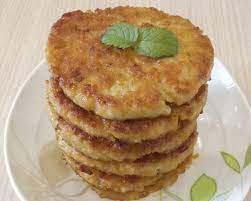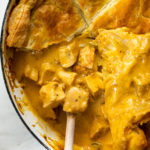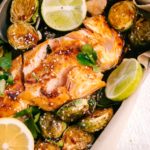Slowly cooking onions brings out their sweetness, pairing perfectly with tart sumac. Finish your flatbreads off with crispy chicken pieces and pine nuts for an enjoyable contrast in textures.
Many will claim msakhan is the national dish of Palestine; however, several others could compete for its honors. Whatever their reason may be for choosing it as national cuisine of their homeland; nevertheless msakhan remains a celebrated and essential Palestinian meal, its story being one of adaptation and people being tied closely to their land.
Advertise Banner
Msakhan, which translates to heated, began as an expression used by Palestinian peasantry when taking taboon bread that had gone stale and coating it in olive oil before heating and devouring it for breakfast. Over time, however, the dish evolved beyond being simply heated bread to include layers of onion cooked with numerous drops of olive oil before being finished off with chicken, pine nuts or almonds for topping off its traditional comfort food flavor.
Though its exact origin remains elusive, reference to it in Palestinian folk songs and folklore indicates its longstanding presence.
Today, Palestinians may describe msakhan as a dish typically prepared during fall olive harvest season when oil supplies are abundant – yet its significance in Palestinian cuisine goes well beyond simply this factor alone. All its ingredients play an essential part in Palestinian life, from bread made with wheat harvested each summer, yellow onions picked, dried and stored, and finally almonds which must also be harvested, prepped, dried and stored before they can be consumed by Palestinians. As autumn nears, sumac becomes ready for harvest while later olive oil season commences. Chicken has historically been one of the primary livestock raised in Palestine and available throughout the year for special meals; these ingredients combined create an iconic celebratory dish which should only ever be reserved for festive events and occasions.
With all its ingredients readily available year-round, msakhan can now be enjoyed any time of year. Still, larger gatherings or weekend family meals often prefer it since preparing this traditional Palestinian dish takes some time and preparation; most commonly made at home but some restaurants specialize in serving it exclusively as well; although most Palestinians will tell you there’s nothing quite as satisfying than tasting homemade msakhan!
Do not let the preparation of multiple handmade elements seem intimidating; Palestinians love this dish so much they have come up with shortcuts and variations over the years, from using store-bought bread to shredding their chicken before rolling up in super thin tortilla-style bread (called Saj/shrak bread in Arabic), so as to resemble spring rolls – either small enough for canapes, or substantial enough as an actual meal!
At its heart, this recipe requires simple ingredients – olive oil and sumac are key here; bread should also remain soft and fluffy without quickly dry up or become brittle over time. As far as chicken goes, your preference for white or dark meat depends upon personal taste – cooking both components thoroughly so they can easily come off of their respective bones is key!
As it’s already a complete meal on its own, why not serve this with yogurt as well as Palestinian cracked green olives and chopped Palestinian salad for an elaborate spread?
Recipe Details (Prep 15 mins; Cook 60 mins; Total 75 mins); Rate & Comment: Chunk Chicken [For the Chicken Recipe, see Ingredients below for ingredients]
Chicken legs or breasts (approx. 2.14lbs; 1kg) require 1 1/2 tablespoons (22ml) extra-virgin olive oil, plus either sumac, ground allspice, freshly ground black pepper and 1/2 teaspoon ground cumin for seasoning, as well as 1 teaspoon sumac for brining (or one tablespoon in lieu). Also needed is 6 tablespoons (90ml). To serve: Ions will require 6 tablespoons (90ml).
Assemble 5 medium yellow onions (2 1/2 pounds; 1.1kg), cut into 1/4-inch dice. Use 1 3/4 teaspoons (7.5g) Diamond Crystal Kosher Salt; for table salt use approximately half as much by volume or weight (one tablespoon (10g of sumac and 1.5 teaspoons (6g each of ground cumin and ground cinnamon; then add one half teaspoon each of ground cumin, cinnamon and black pepper.)
Serve this soup in four 8-inch taboon breads (or good quality pita/naan from note 1) along with 1/4 cup (60ml) homemade chicken stock or low sodium store-bought broth or water for easy consumption. Garnish as desired using sumac for garnish.
Toast 1/2 cup (2 1/2 ounces; 70g) pine nuts and/or slivered almonds as required (see note below for toasting instructions).
Directions
For the Chicken: Adjust the oven rack to middle position and preheat to 450degF (230degC). Line a rimmed baking sheet with parchment. In a small bowl, mix olive oil, sumac, allspice, black pepper and cumin until blended well; spread mixture on prepared sheet then arrange chicken skin side up onto it – season with salt on all surfaces then rub all over with spiced oil (some under skin too!). Roast chicken until an instant-read thermometer registers 150degF (66degC for breast meat), about 25-30 minutes depending upon thickness – let rest 15 minutes then reserve any juices that might accumulate for onions!
Assemble the onions: In a medium Dutch oven or large skillet over medium-low heat, combine olive oil, onions, and salt, and simmer, stirring occasionally, for approximately 30 minutes or so until soft and golden-tinged edges begin appearing around each onion strand – adjust heat as necessary so it remains gentle but active cooking.
Add sumac, cumin, cinnamon, black pepper and chicken broth, along with any reserved juices from chicken pieces, stirring often until onions have reached a thick and sticky consistency, about 10 more minutes longer. Remove from the heat and set aside.
To serve: Preheat broiler and position top rack 4-6 inches from broiling element. Line a rimmed baking sheet with parchment; use one flatbread at a time to moisten its edges by dipping and rotating in oily glaze on onion mixture surface, setting them onto prepared sheet when complete.
Serve immediately while still warm for maximum crunchiness and moisture! Start with one flatbread. Place about one-fourth of the onion mixture onto it and spread in an even layer, leaving an edge-thin border like pizza. Scatter sumac and pine nuts all over, stacking these layers until all your flatbreads and onion mixtures have been used up (this helps ensure their moistness when broiling later on).
If your chicken has become cool too quickly, put it under the broiler briefly just long enough to reheat and crisp its skin back up again. Working one or two flat breads at a time on an individual baking sheet and broil until their edges have begun to brown in spots (roughly one to four minutes – keep an eye out though as broilers’ strengths vary quite drastically!). Transfer each flatbread onto its respective plate then top each flatbread with one whole piece of chicken to finish serving!
Notes
Taboon bread is ideal, however any sturdy flatbread such as homemade or store-bought pocketless pita or naan will suffice in an emergency situation.
To toast pine nuts: Combine nuts with 1 tablespoon olive oil in a microwave-safe plate and microwave at 1-minute intervals while stirring between each one, until golden-brown and toasty (approximately 3 minutes total); or you could toast over medium-low heat in a skillet while constantly stirring to toast (about 5 minutes total).
Make-Ahead and Storage A prepared onion mixture may be stored for up to 3 days in an airtight container before being heated just prior to assembly.


